Winter hardiness is most likely the quality novice gardeners first learn about. If you live in Mexico, the most tender plant delicacy can be yours; if you live in Iceland, you learn to work with slimmer pickings. In either case you can accomplish great results. But one consideration we don't think of much is summer temperatures.
In my adopted Vancouver, the maritime influence of vast seas keeps the summer dry but particularly cool. While my winters aren't cold enough to kill a great deal of tropical plants, the summers aren't hot enough to allow them to fully flourish. My elephant's ears and cannas seemed happier in New York than here. Nonetheless, here is a very narrow selection of seven of my favorite high-impact tropical plants.
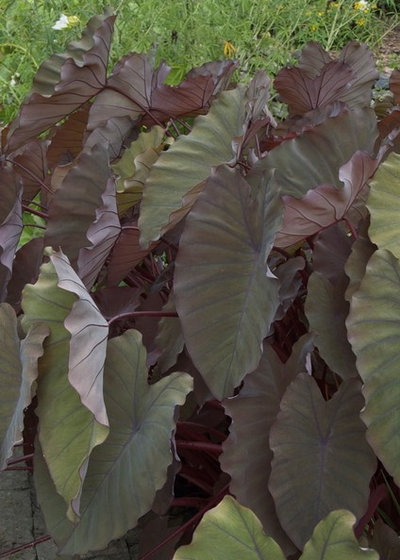
CYAN Horticulture
Elephant's ear(Colocasia esculenta)Of major economical importance, the various species of taro grow from large underground tubers that relish wet to water-logged soils. Gardeners' favorite
Colocasia esculenta is most often called elephant's ear: Its large arrow- to heart-shaped leaves leave no doubt why. Given plenty of heat, leaves colored green, white variegated or burgundy become close to gigantic. In beds, ponds or large tubs, Colocasia is a premier tropical plant.
USDA zones: 9 to 11 (find your zone)
Water requirement: Water-logged, wet, moist soil
Light requirement: Full to partial sun
Mature size: 1 1/2 to 4 feet tall
Seasonal interest: Summer
When to plant: Spring or summer
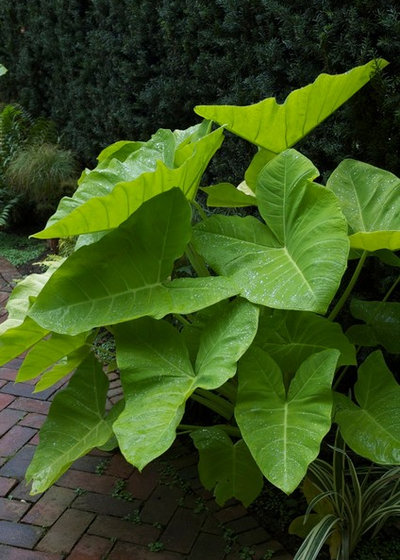
CYAN Horticulture
Lime Zinger Elephant's Ear(Xanthosoma aurea 'Lime Zinger')
Lesser-known but just as spectacular is golden-leaved elephant's ear (
Xanthosoma aurea 'Lime Zinger'). Belonging to the same botanical family but to a different genus, this selection deploys steroidal foliage (each leaf grows to 24 inches) of a uniform chartreuse green that seems to glow in even the dimmest light. Even more so than Colocasia, Xanthosoma requires lots of heat to perform — it sneers at my maritime climate. Another genus of elephant's ear to watch for is Alocasia.
USDA zones: 9 to 11
Water requirement: Wet, moist soil
Light requirement: Full to partial sun
Mature size: 2 1/2 to 4 feet tall
Seasonal interest: Summer, fall
When to plant: Spring or summer
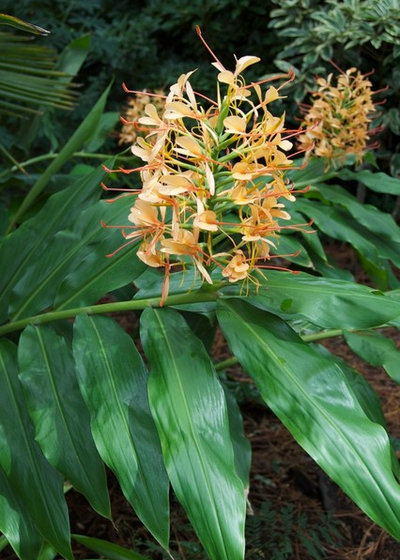
CYAN Horticulture
Ginger Lily(
Hedychium spp and cvs)
Hardy ginger lilies (
Hedychium spp and cvs) are a treat for whoever can grow them successfully. (They barely have time to start blooming for me.) Their undivided stems showcase glossy leaves often set off in rows and hold large heads of intensely fragrant spidery flowers in varied colors. The one shown here is called 'Anne Bishop', a hard-to-get yet so good Hawaiian selection. I saw them blanketing hillsides in the wilds of Bhutan, to great visual and olfactive effects.
USDA zones: 8 to 10
Water requirement: Moist soil
Light requirement: Full to partial sun
Mature size: 5 feet tall
Seasonal interest: Summer or fall
When to plant: Spring
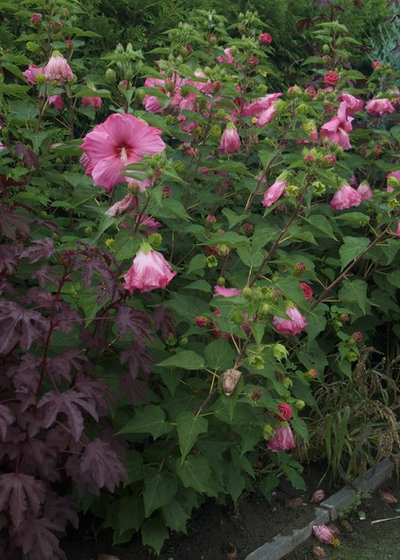
CYAN Horticulture
Perennial Hibiscus(Hibiscus moscheutos)Before flowers are even considered, interesting foliages should be sought after, especially in a tropically minded garden. But who can resist the dinner-plate-size flowers of herbaceous hibiscus? They're cheesy to some, but I adore this over-the-top floral display. There is a generous handful of hardy-to-the-bones hybrids available in the trade (the one shown here is 'Sweet Caroline'). While they're slow to emerge in spring, a good dose of heat triggers them into explosive growth.
USDA zones: 4 or 5 to 9
Water requirement: Moist but well-drained soil
Light requirement: Full sun
Mature size: 3 1/4 feet tall and wide
Seasonal interest: Summer and fall
When to plant: Anytime
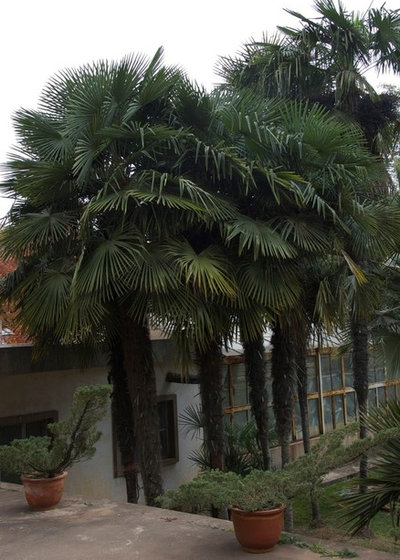
CYAN Horticulture
Windmill Palm(Trachycarpus fortunei)The high-profile epitome of the tropics, palm trees line avenues in Los Angeles, populate wild thickets in Florida and can grow as far north as Canada. The hardy windmill palm
(Trachycarpus fortunei) is native to Asia and handles snow and cold like no other palm tree. Its skinny yet stately presence and large fan-shaped foliage make it the one must-have tree in nordic tropical gardens. I particularly like it clustered in a small grove, as in the example here.
USDA zones: 7 to 10
Water requirement: Moist but well-drained soil
Light requirement: Full to partial sun
Mature size: Up to 10 feet tall
Seasonal interest: Year-round
When to plant: Anytime
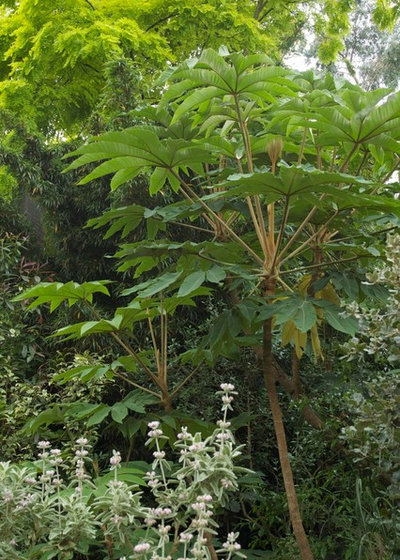
CYAN Horticulture
Rice Paper Plant(
Tetrapanax papyrifer 'Steroidal Giant')
A similar look can be achieved with the weird and wonderful Rice Paper Plant (
Tetrapanax papyrifer 'Steroidal Giant'). Fast growing, this plant dies to the ground in colder regions; otherwise it is a shrub of few, upright and sturdy stems, cloaked in very fuzzy, titan parasol-shaped leaves. The overall effect is mind blowing. Be advised: Its vigor also translates into inquisitive underground runners that will sprout here and there.
USDA zones: 7 to 10
Water requirement: Moist but well-drained soil
Light requirement: Full sun to dappled shade
Mature size: 6 1/2 feet tall
Seasonal interest: Spring to fall
When to plant: Anytime
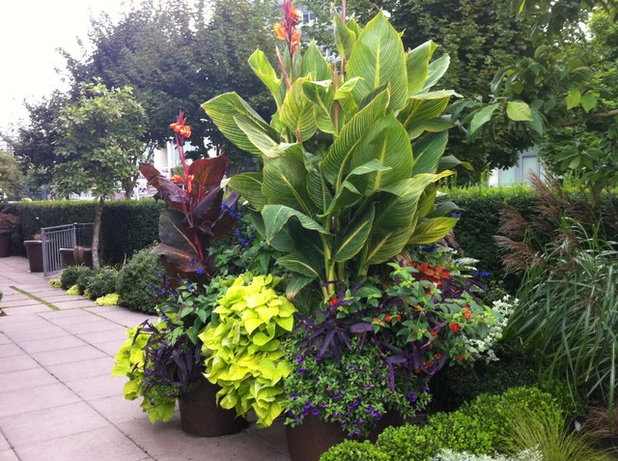
Glenna Partridge Garden Design
Canna(
Canna 'Bengal Tiger')
Such an abundance of generous foliage and extravagant colors is the source of spectacular displays, temporary or permanent; my friend and garden designer Glenna Partridge has mastered the art of these. On the few warm days that our Vancouver — or any other maritime climate — offers, cannas, coleus and sweet potato vines literally explode. Be ready.
USDA zones: 8 and up
Water requirement: Moist but well-drained soil
Light requirement: Full sun
Mature size: 6 feet tall
Seasonal interest: Summer and fall
When to plant: Spring





